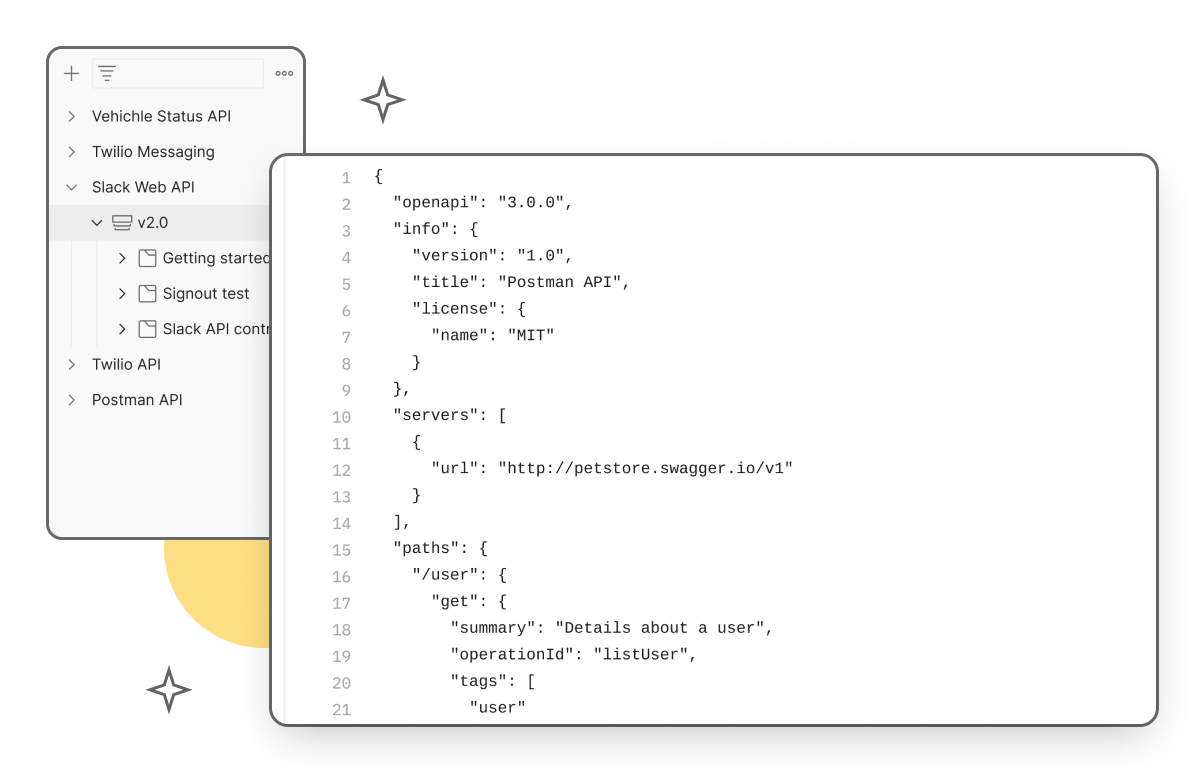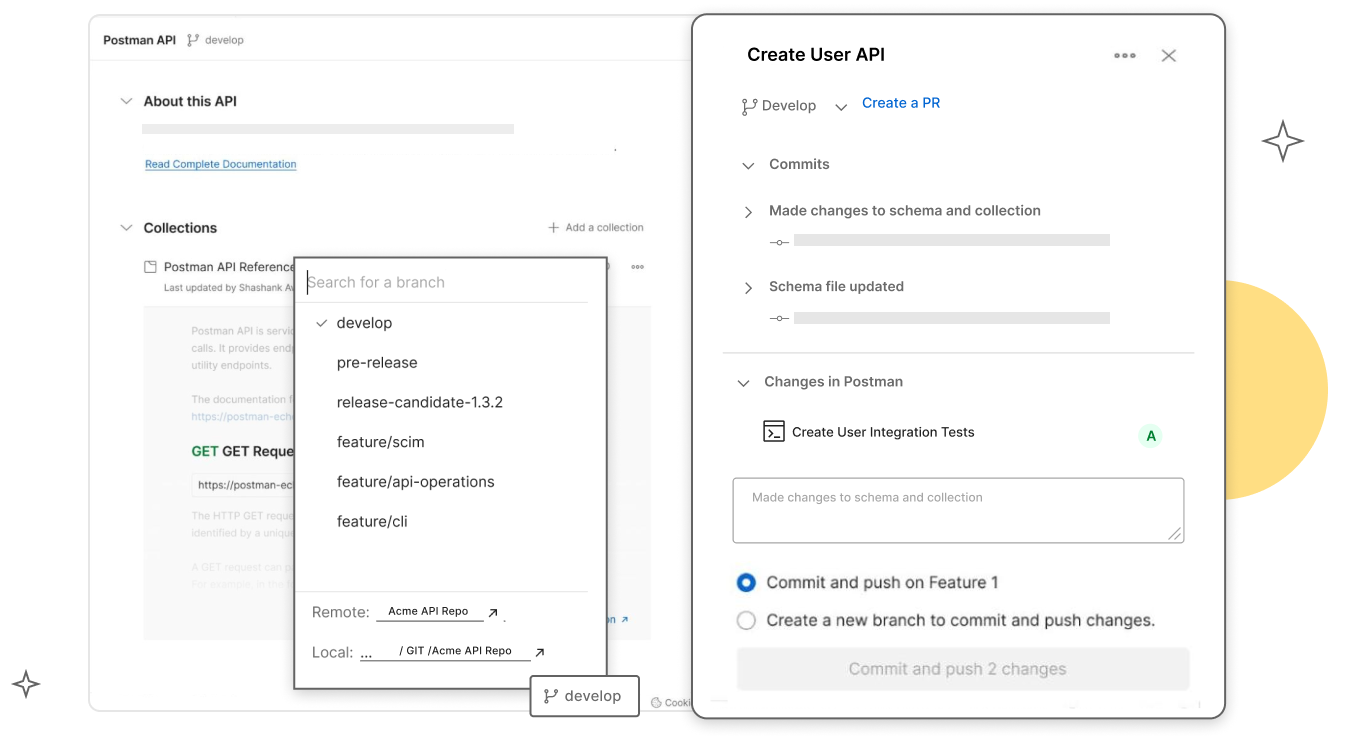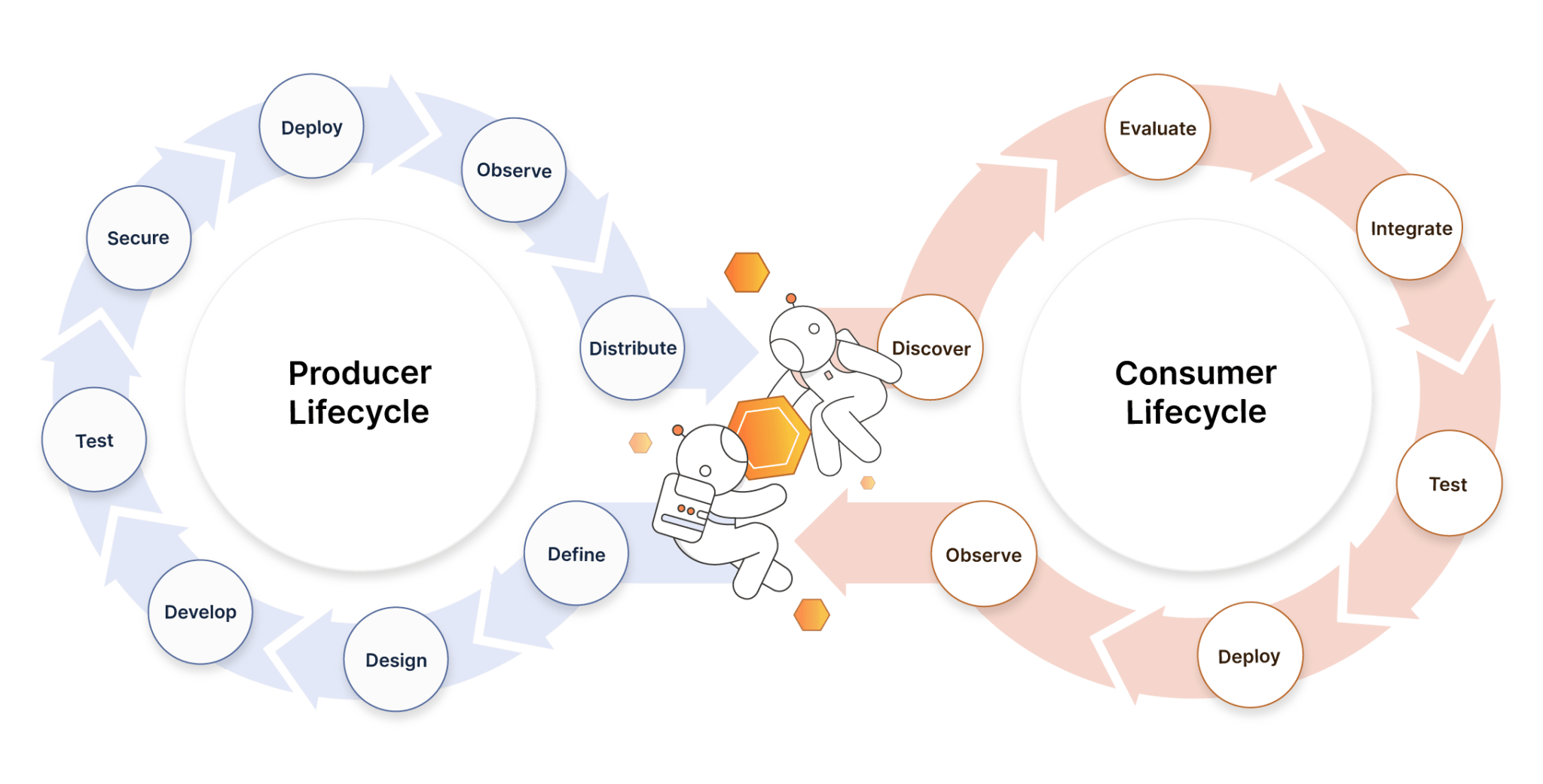How collaboration works in Postman
Learn how developers, testers, architects, and other stakeholders work together to build and consume APIs.
What does collaboration mean in API development?
The need for collaboration has grown and changed as APIs have become more integrated with services—and even become products themselves. Now, API consumers aren't just developers. They are customer support, go-to-market, and developer relations teams who need to stay up-to-date on the latest changes.

API-first development
An API-first approach starts with API design and development before writing a single line of code. This allows you to:

Code and API repositories
Just like code, APIs need a single, dedicated space that:

Producers and consumers
API development requires close collaboration between consumers and producers.
Postman makes it easy to create this feedback cycle by providing a single platform where producers and consumers can work and communicate together.
Integrations
Building APIs is complex and requires a number of different tools. Postman helps the tools you use work better together through:
What is a workspace?
A workspace is a shared context for building and consuming APIs. Postman workspaces allow real-time collaboration within and between teams with built-in version control.
Create a shared context
Workspaces provide a shared context for your APIs, helping your team get up to speed and stay up to date. With workspaces, you can:
Work in parallel with version control
Workspaces support core version control concepts like forking, merging, and conflict resolution, allowing teams to:
Invite users and share work
Invite as many users as you want to collaborate in workspaces.
Create a feedback loop
Use comments to give and receive feedback on requests, APIs, and collections, creating faster feedback cycles that reduce development time.
What is a collection?
Collections are executable API descriptions. They are groups of related requests and are the primary building block for all of Postman's features, allowing you to build mock servers, generate documentation, create monitors and build test suites.
Collections: executable API descriptions
While static API descriptions in the OpenAPI, RAML, or GraphQL formats describe how your API is supposed to behave, collections show how it actually behaves.
To keep your collections and schemas in sync, write and edit the schema directly in Postman or import a schema and convert it into a collection.
Postman Runtime
The open source Postman Runtime executes all API requests, ensuring consistent request execution across Postman's products, including:
Postman Collection SDK
The Postman Collection SDK is an open-source project that defines the collection format. It provides:
What is an API in Postman?
An API in Postman defines metadata like name, descriptions, and versions, along with elements like schema, documentation, environments, and test suites.
Organize your API workflow
Manage your workflow in four stages.
Track development with version tags
Easily maintain multiple versions of an API and its elements at the same time.
Increase flexibility with schemas
Write, edit, and import schemas in Postman.
Connect it all on one platform
Organize and manage every aspect of your API development workflow in one place.
Your AI strategy is only as strong as your APIs
Postman helps teams collaboratively build APIs that power workflows and intelligent agents. With support for the Model Context Protocol (MCP), your APIs are integration ready. Learn how top teams avoid pitfalls and rescue APIs from chaos.